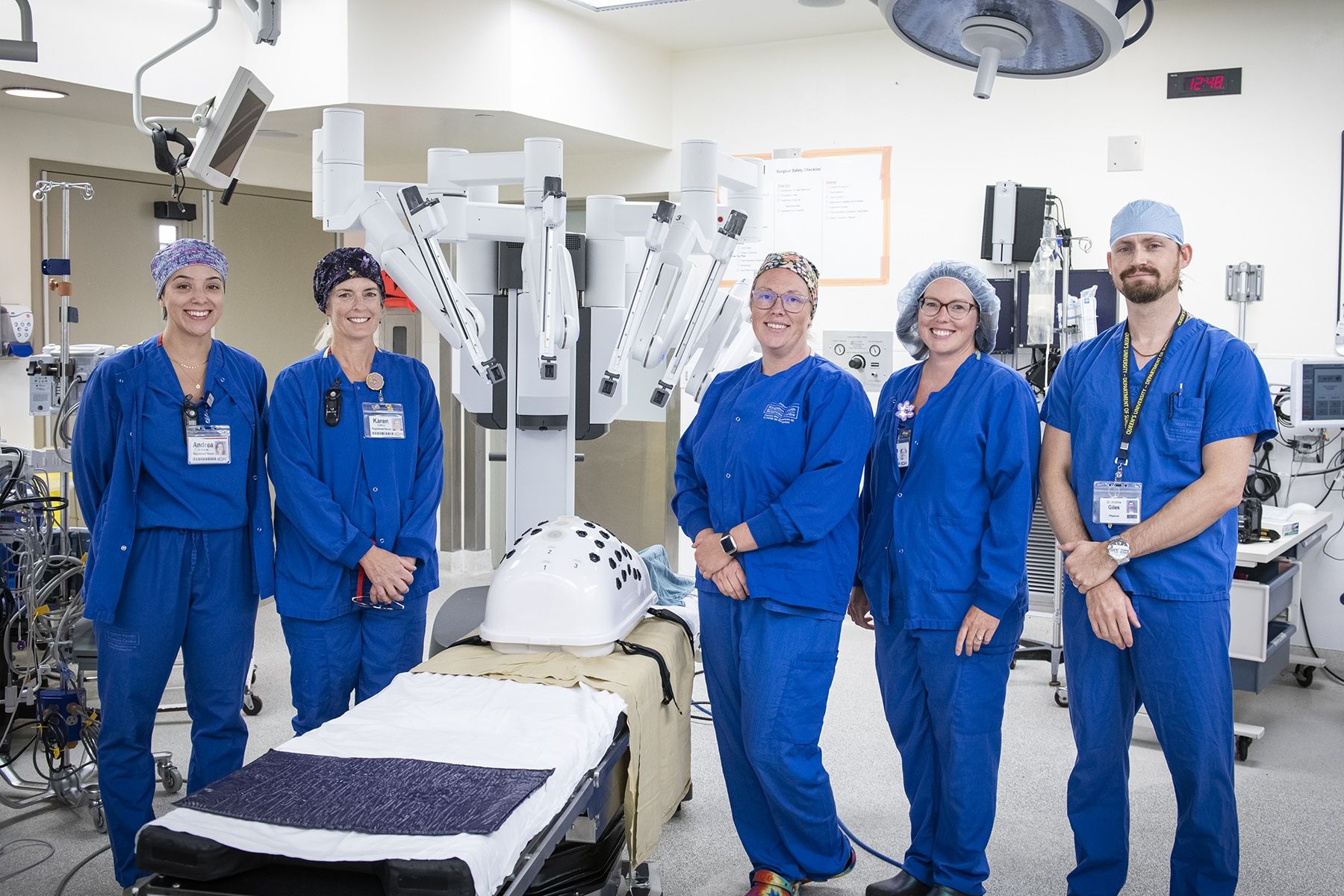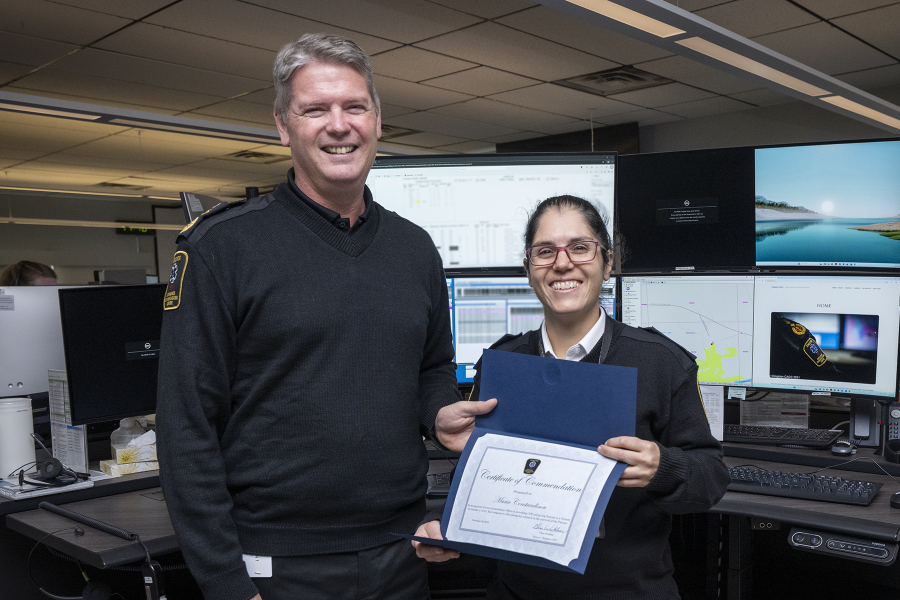Effective immediately masking is required for everyone when present on all inpatient units, in the Emergency Department (ED), the Urgent Care Centre (UCC), and the Children’s Outpatient Centre (COPC).

For the first time in southeastern Ontario, it is now possible for patients to have surgery to remove cancerous tissue from their lungs using a robotic surgical system that is part of the A.B. Smith QC Robotics program at Kingston Health Sciences Centre (KHSC).
This minimally invasive procedure, in which surgeons use controls at a nearby console to guide a robotic system inside the body, means patients experience less pain and blood loss and spend less time in the hospital compared to other surgical approaches.
“The addition of thoracic surgery to our robotics program is essential to providing the best possible care for patients and the most modern training experiences in our medical school and academic surgical program,” says Dr. Andrew Giles, a thoracic surgeon at KHSC who completed a fellowship at Mayo Clinic in Advanced General Thoracic Surgery, a major component of which was robotic thoracic surgery. He also has certification through Intuitive Surgical, the makers of the Da Vinci system used at KHSC.
“In the next decade, I expect this will become the standard approach in Canada, as it is currently becoming the dominant procedure in the United States.”
This new program offering launched with four cases performed between Sept. 14 and 15. As part of the implementation, thoracic surgeon Dr. Ken Reid, thoracic anesthesiologists Drs. Cara Reimer and Melinda Fleming, and specialized nurses Angela Kargus and Karen Stafford worked alongside Dr. Giles.
For the first few cases, the dedicated team was joined by a mentor and experienced robotic thoracic surgeon from Atlanta, Georgia, who helps with international program launches.
Colorectal surgeon Dr. Sunil Patel has been the medical lead of the A.B. Smith QC Robotics program at KHSC since its inception in 2018. “I’m excited about making the benefits of robotic-assisted surgery available to more patients with the addition of thoracic surgery, and I’m grateful to all the members of our team who have made it possible.”
“The robot allows us to do certain surgeries better than they were done before with existing minimally invasive techniques such as those involved in video-assisted thoracoscopic surgery,” explains Dr. Giles. “It also allows us to take a minimally invasive approach to surgeries that were previously only possible with traditional open surgery, requiring long, deep incisions through the body wall which can be more painful and result in lengthy recovery periods.”
Three important ways robotic-assisted thoracic surgery is better
- As advanced tumours are becoming more common, so too is the need to accurately remove lymph nodes to assess and clear cancer. More complete lymph node removal is possible using the robotic platform.
- With its articulating wrists, the robotic platform excels at surgical suturing or stitching. This is important when an advanced tumour requires not only portions of the lung removed but also the removal of part of the airway that then needs to be reconstructed.
- The robot allows surgeons to see the blood distribution in body tissues using fluorescent dye and special built-in imaging. This visibility is vital to allow for the removal of smaller parts of the lung, enabling patients with poor lung function to have cancer surgery, who would not have been considered candidates otherwise.
Looking to the future
While the program is starting with the removal of lung sections and lobes, done mainly to treat lung cancer, Dr. Giles has his sights on what the program will be able to accomplish in a year from now.
“I’d like to see us expand our offering to include all procedures that are currently done minimally invasively using other approaches.”
This includes surgeries to remove tumours in the area between the lungs and to remove the thymus gland in the treatment of a chronic autoimmune disorder called myasthenia gravis. It also includes surgeries to stabilize the function or shape of the diaphragm and to remove some or all of the swallowing tube (esophagus) between your mouth and stomach.
“With the robot, many of these surgical procedures can be done in less time and with greater reliability and precision,” says Dr. Giles.
“We have a real opportunity to offer our patients the best outcomes and become one of a select few hospitals in Canada offering a full suite of robotic-assisted thoracic surgeries.”
“Similar to how we are now completing about 90-95 per cent of all colorectal cancer procedures using minimally invasive robotic techniques, we are committed to doing the same with thoracic surgeries as soon as we are able,” added Dr. Patel.
To find out how you can support world-class health care in Kingston and surrounding communities, please visit uhkf.ca.



